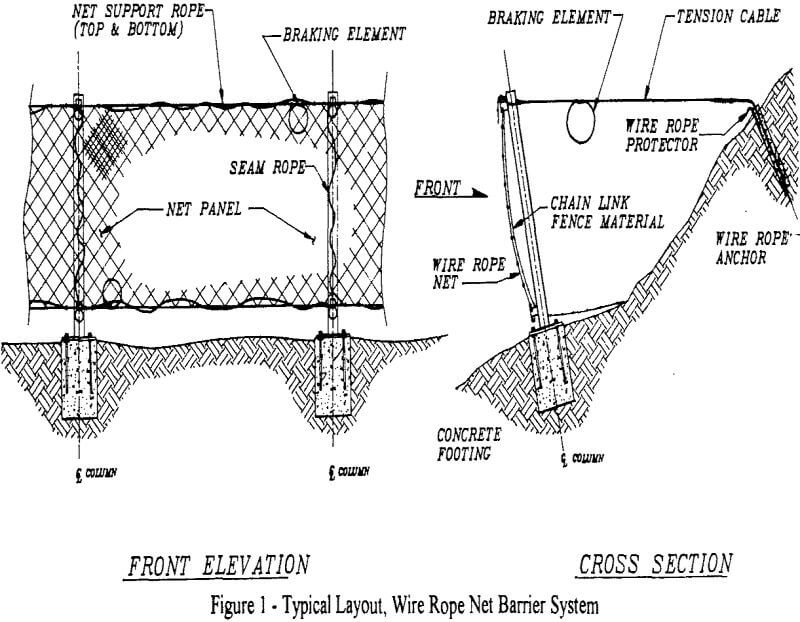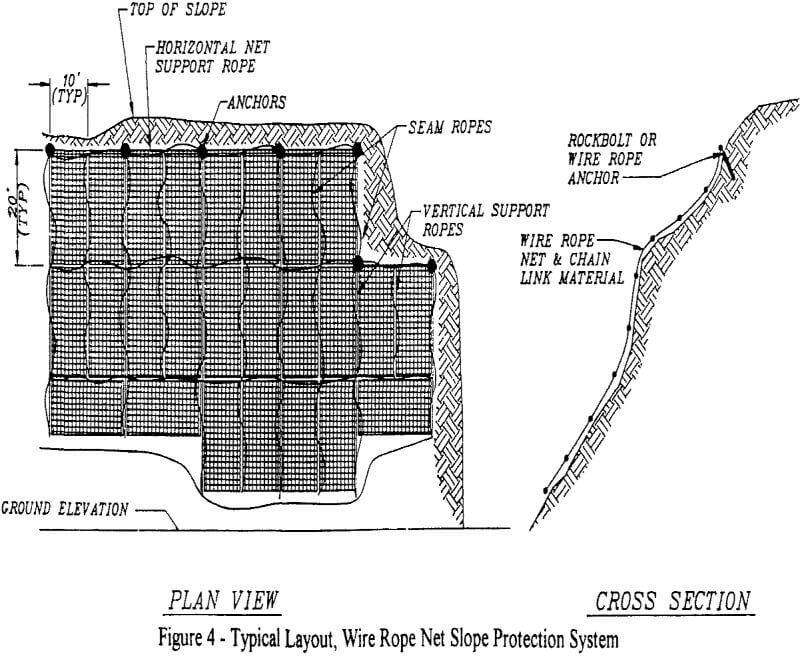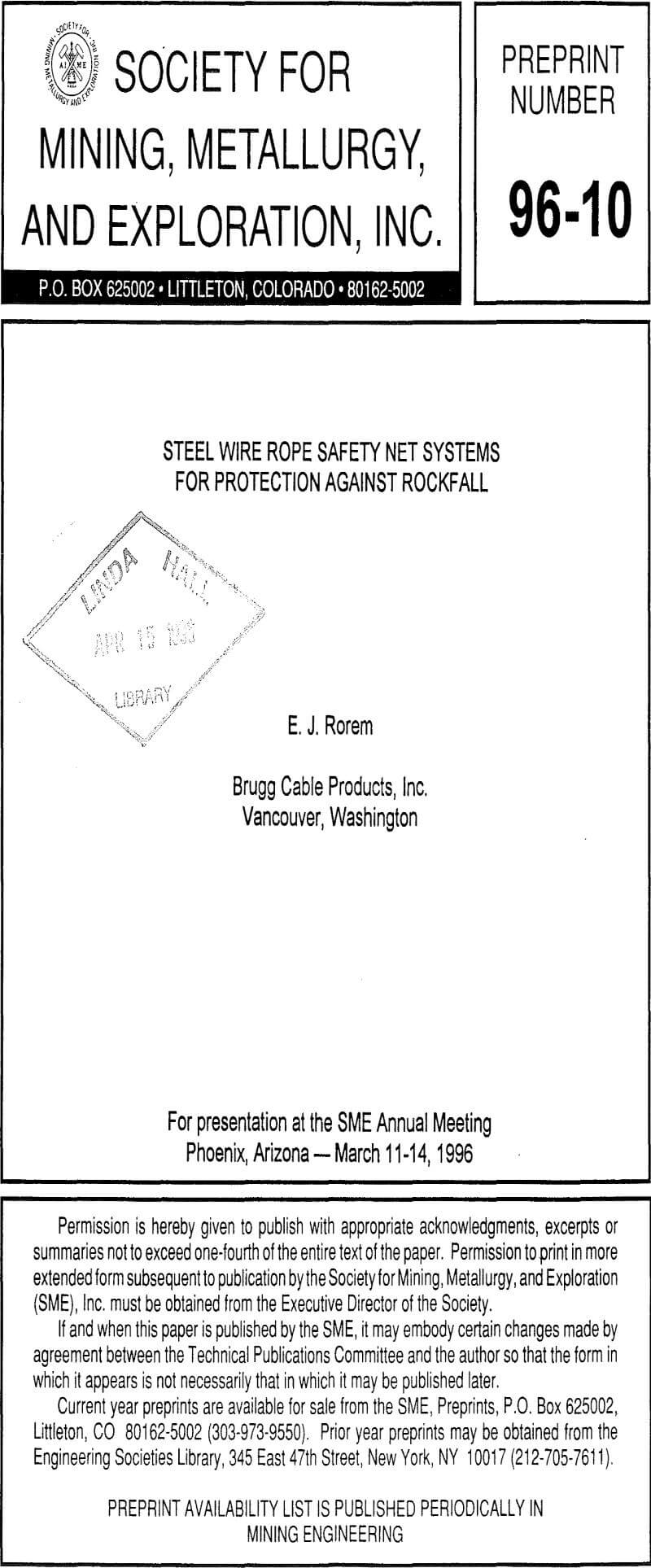Wire Rope Net Rockfall Barriers
A rockfall protection system with the appropriate strength characteristics and height can be designed. Wire rope net rockfall protection barriers of varying designs have been engineered with the proven ability to withstand impact kinetic energies ranging from 81 kJ (30 ft-tons) for the simplest of designs, to a maximum of 1,000 kJ (369 ft-tons). The actual design load chosen for each site and system should be the simplest possible, but such that little or no repair of the system will be required after impacts, other than occasional cleaning and other minor maintenance.

Figure 1 shows a typical wire rope net barrier design. Each of the system components and the system as a whole is designed to emphasize flexibility and energy dissipation. The one exception to this point is the columns, which only serve to support the nets and cables. During a rock hit, kinetic energy is transferred from the nets to the support wire ropes and finally to the anchors. In the case of energies approaching the system design limits, the friction braking elements will activate, further dissipating kinetic energy.
Were Rope Net Draping (Slope Protection)
Wire rope net draped systems are a very viable solution when large rocks must be prevented from falling dangerously, and catchments such as rockfall barriers are not practical. Rockfall fences may prove impractical due to space limitations at the slope toe, unusually high rock bounce heights, or extremely steep slopes. When rocks greater than 0.6 m (2 ft) in diameter need to be retained by draping, wire rope nets become the material of choice over wire mesh and chainlink materials. Draped systems utilizing wire rope nets have the advantage of being capable of bearing large static loads (from rocks, debris, snow or ice) and being highly resistant to tearing, while conforming to irregular terrain and allowing vegetation to take hold.
The basic wire rope net slope protection system utilizes a series of individual wire rope nets laid onto a slope, each net having typical dimensions of 3 x 6 m (10 x 20 ft) and a mesh size of 0.3 x 0.3 m (12 x 12 inch). The nets can either be laced to anchored support ropes hanging freely down the slope (Figure 4), or the nets can be anchored at each corner or to existing rockbolt locations (Figure 5). The former design, also referred to as a blanket system, produces what is essentially a controlled rockfall, allowing rocks to slowly and safely move downslope under the nets. The latter design is intended to hold all rocks in place and allow no movement. Smaller mesh sizes can also be manufactured, and/or chainlink fence material can be attached to catch rubble smaller than the net mesh size.


